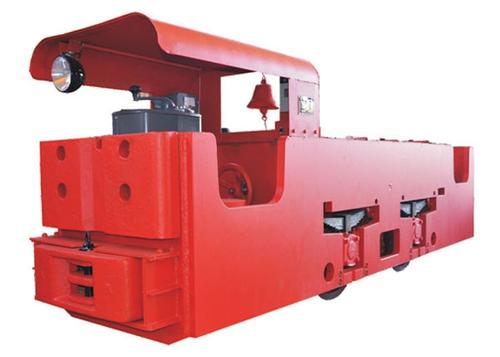How To Solve The Key Accident Of Battery Narrow Gauge Locomotive
Date:2020-02-03 Label:
Locomotive
Battery Locomotive
Narrow Gauge Locomotive
During the daily operation of battery locomotive, various accidents will occur due to operational problems and the impact of the external environment. Some key accidents often occur. Once an accident occurs, it will not only bring great economic losses to the construction, but may also cause Casualties occurred, so how to solve the key accidents of battery electric vehicles?
1. When the narrow gauge locomotive cylinder pad burns out and burns out, the area is small, fill it with asbestos thread; when the burnt out area is large, you can cut a patch from the same part of the waste cylinder pad of the same thickness, and carefully tap on it to make the joint Good; if the burnout is between the two cylinders, the asbestos thread needs to be wrapped in copper.
2. If the radiator leaks into the water hose, if there is a slight rupture in the hose, use a piece of tape to cover the leaking place with soap, and then tie it tightly with iron wire; if the rupture is severe, cut it into two sections with a knife from the hose rupture. A bamboo tube is placed between the hoses, then tied with iron wire, and then it can be installed. When the copper tube of the radiator core leaks slightly, you can use soap to paste the leak. If the water leakage is serious, you can use oranges to gently pinch the leaking place so that it does not leak.
3. If the valve spring is broken only in one place, the two broken springs can be turned and installed. If the spring is broken in several places, the multi-cylinder machine can remove the cylinder's inlet and exhaust valve adjustment bolts, and the valve is closed, so The cylinder stopped working and oil was cut off at the same time.
4. Sudden power interruption in the middle of the narrow gauge locomotive When the horns suddenly disappear, the lights are completely absent, and the starter does not turn, it means that the vehicle is completely powered off. At this time, you can first check whether the pile head of the battery is loose. When checking, don't pry at random. Use carp pliers to fork and test the two pile heads. If there is no spark, it means that the pile heads are loose and can be tightened with a wrench.
5. Clutch slip If the friction plate is stained with oil, you can step on the clutch pedal, install gasoline with a grease gun, and shoot at the gap between the flywheel, friction plate, and clutch pressure plate to melt the oil on it and use it temporarily ; If the friction plate slips due to burning, you can shave the burned part, but you should start smoothly when driving and change speed quickly.
6, the leaf spring is broken According to the situation, the leaf spring, the axle and the frame are cushioned with wooden blocks, tied with iron wire, etc. for temporary use, and driven to the repair point for replacement.
7. No jacks for tire replacement. Double-row tires can be replaced with wooden blocks, stones, or bricks. If the outer wheels are suspended, they can be replaced. When removing the front wheels or single tires, you can use wooden blocks or bricks. 2. Stabilize the front axle or rear axle, dig a pit on the tire to be removed, and leave the tire suspended, you can replace it; use a flat-topped wooden inclined roof under the front axle or rear axle that needs to be replaced, and then start The car lifts the front axle or rear axle of the top wood, and when the top wood is vertical, the tire can be changed.
8, fan tape damage Fan tape damage, mostly broken. It can be tightened with several strands of thick rope. The length and thickness of the rope should be similar to the original fan tape. Holes, connected with thick iron wire for temporary use.
